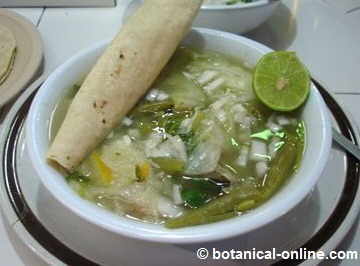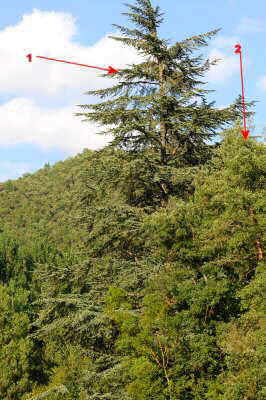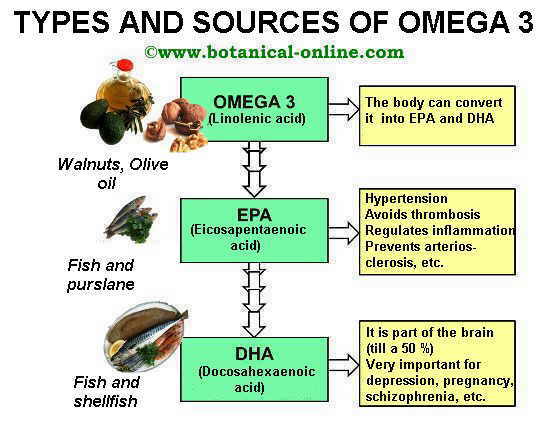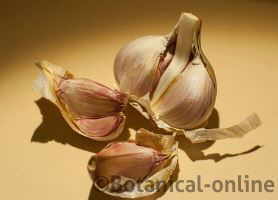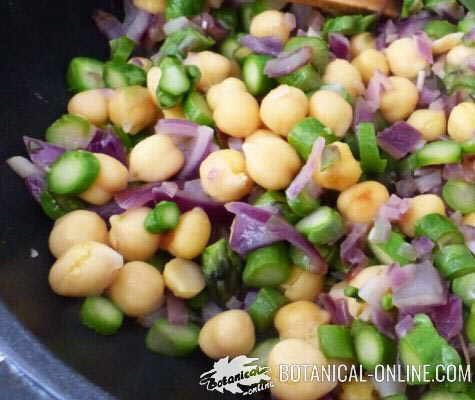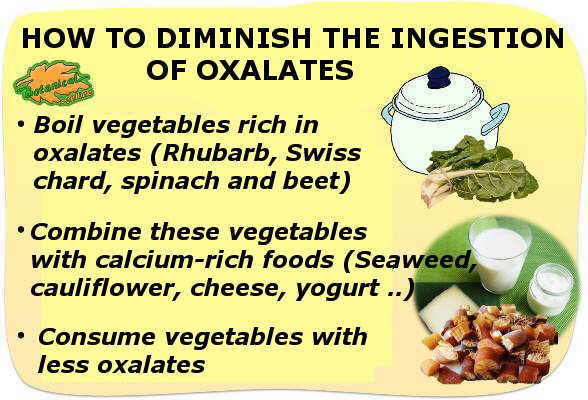Contents
HOW TO GROW HOP PLANT
 Characteristics of hop (Humulus lupulus)
Characteristics of hop (Humulus lupulus)
Dioecious perennial plant of the Cannabaceae family up to 8 m. tall. Annual twining stems that twine in any medium. Dark green leaves palmately – divided, provided with 3-5 toothed lobes. Male and female flowers on different plants. The first are yellow-green and are gathered in panicles; the female, gathered in catkins, light green. Fruits in achene.
 Irrigation in hop
Irrigation in hop
It needs moisture especially when young, enduring drought well once it has become adult.
 Uses of hops
Uses of hops
- Gardening plant: In gardening, it is used as a climbing plant, ideal for covering fences or protect walls.
- Medicinal plant: It is also well recognized because of its medicinal properties highly valued since ancient times (More information in the listing below)
- Beer industry: Hops are used industrially in the manufacture of beer, where it provides its unique aroma and flavor while allowing beer conservation.
- Edible food: It can be ingested as an edible plant. With its fresh leaves, salads can be prepared or they can be boiled and eaten as vegetables. With the tender shoots, one can elaborate soups or omelets like asparagus.
 Hop. environment and exposure
Hop. environment and exposure
Very resistant to cold. At rest, it can withstand up to -20 C, but it can be damaged by cold during vegetative period. It prefers cool moist temperate summers presenting an average temperature between 16 and 18 º C.
It can be grown in sun or partial shade.
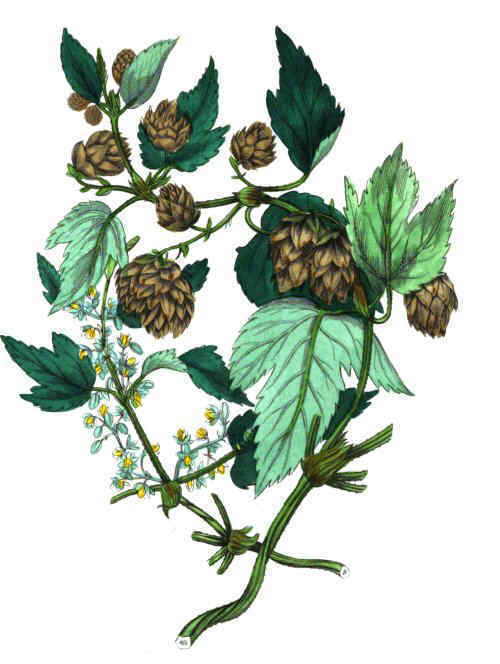
A drawing of the plant with different flowers on separated plants: male (yellow panicles) and female(light green catkins)
Hop. propagation
It can be propagated by seed or by division in spring or cuttings in winter.
How to propagate it by seeds? The seeds are planted in cold seedbeds. Germination is very fast. Once seedlings can be handled, they have to be planted in pots that must be kept indoors for transplanting next spring or summer.
How to propagate it by division? Propagation can be done by dividing the rhizome in spring and plant it directly in its final location. This is the method most widely used and preferred when growing hop for beer production.
Most of the time, rhizomes are obtained by specialized companies to provide more aromatic and productive varieties. These rhizomes are distributed wrapped in some kind of mulch and should be planted as soon as possible.
Rhizome can be planted in a furrow horizontally to a depth of about 2.5 or 3.5 cm or we may opt for planting vertically with the tip located at the top. We will know where the bud is because it has a bulge. Once planted, They should be kept in constant moisture, but they should not be waterlogged.
How to propagate it by cuttings? If you want to plant it by cuttings, when arriving March, we will take a cutting of basal branches about 10 to 15 cm long. This will be placed in a pot with a mixture of peat and sand. It must be kept within the shadow, keeping constant moisture for the roots to appear. By the next summer, it will be transplanted into its final place.
Whatever type of planting, the soil should be prepared beforehand, digging it well and adding a large amount of fertilizer or manure.
Hop. Soil and care
They grow best in deep soils of any type, with a good drainage. Hop plants have a double root system: a vertical one that grows down into deep soil and can reach a range of between 1.80 and 2, 50 m. Another superficial root system that moves around 20 or 30 cm below the soil surface. This dual system forces to use deep soil and to be very cautious in cleaning chores.
Hop only seems not to withstand heavy clay soils, preferring the neutral or slightly acidic ones, with an approximate pH between 6.5 and 7.
Maintenance implies having it usually free of herbs. It is better not to do it manually avoiding to dig too deeply into the ground to avoid damaging the shallow roots.
You must provide some sort of support so it can climb using its twining stems, which are threaded in the same direction of the leaves of a clock. Otherwise, the hops will creep along the ground.
If cultivated intensively for the production of lupulin, you must install a wire system consisting of a framework of pots that hold up a number of wires. At first, you should direct hop up the posts; later on, it will wrap around the wires.
When winter comes, the outside of hops dies leaving only alive the stems and roots located underground. When this occurs, you should cut off all external branches at ground level. Subsequently, they must be burned or intended to produce compost. (You should avoid leaving branches anywhere because, in the warmer weather, they can root easily and overextend)
It is during this time that you should pave the way for the revival of the plant in the spring. Manure or fertilizer should be added to each (mulching) to prevent the cold can damage the living part that remains underground.
 Hops. Harvesting, drying and storage.
Hops. Harvesting, drying and storage.
If hops have been cultivated for beer production, cones should be collected when ripe. This is shown by the strong scent given off when you scrub them between your fingers. Equally, when they become hard to touch and consistent changes or when green turns to a flexible papery texture as they mature. Also note that the lower bracts become brownish.
To dry the cones you can use an oven and introduce them at a temperature not exceeding 60 º C. Product quality depends on temperature not becoming very high.
The cones can also be dried outdoors. They must be spread on a flat surface protected from the wind with a windscreen. To promote drying, do not stack too and stir every day. Hops are considered to be dry when the inner parts are broken when bending them.
Once dry, the cones must be stored in a dry, airtight container and be stored in the freezer until used.
 Hop. Pests and diseases
Hop. Pests and diseases
The main pests that affect hop plants are aphids and spider mites.
![]() More information on hop.
More information on hop.

 Irrigation in hop
Irrigation in hop